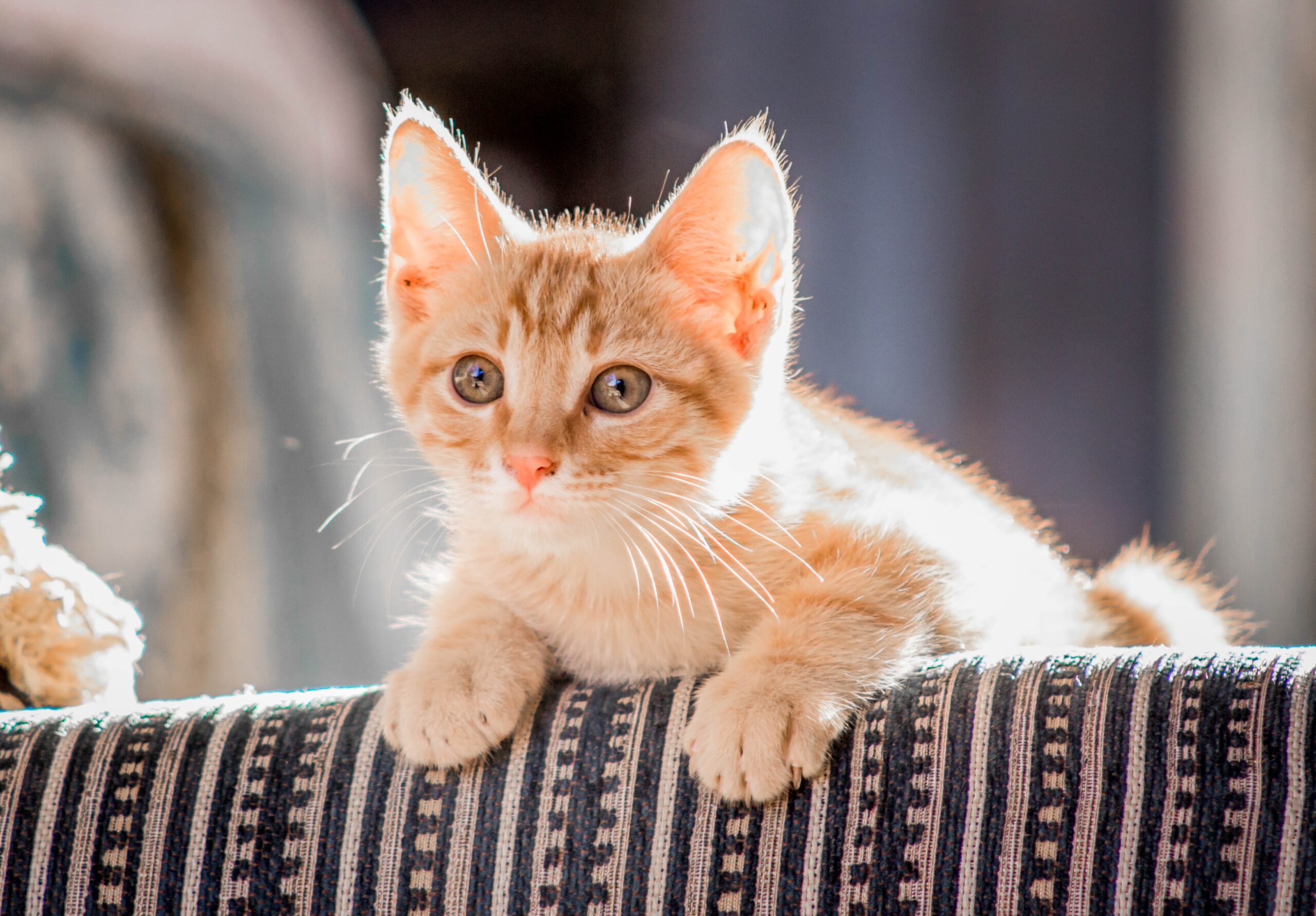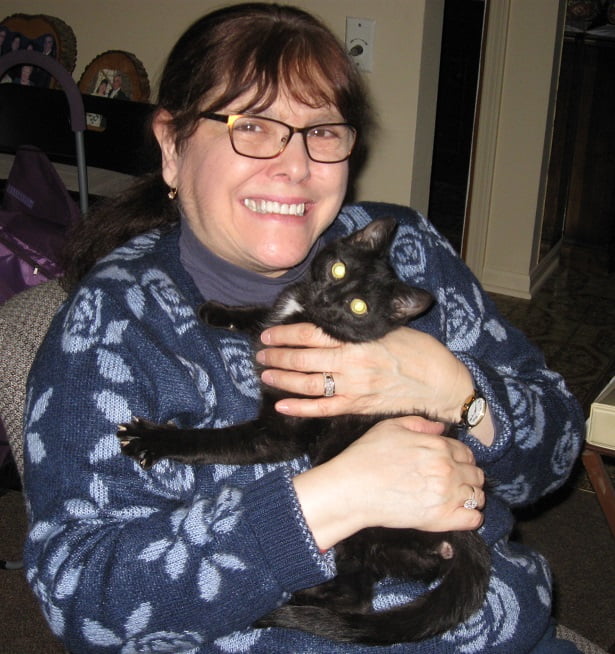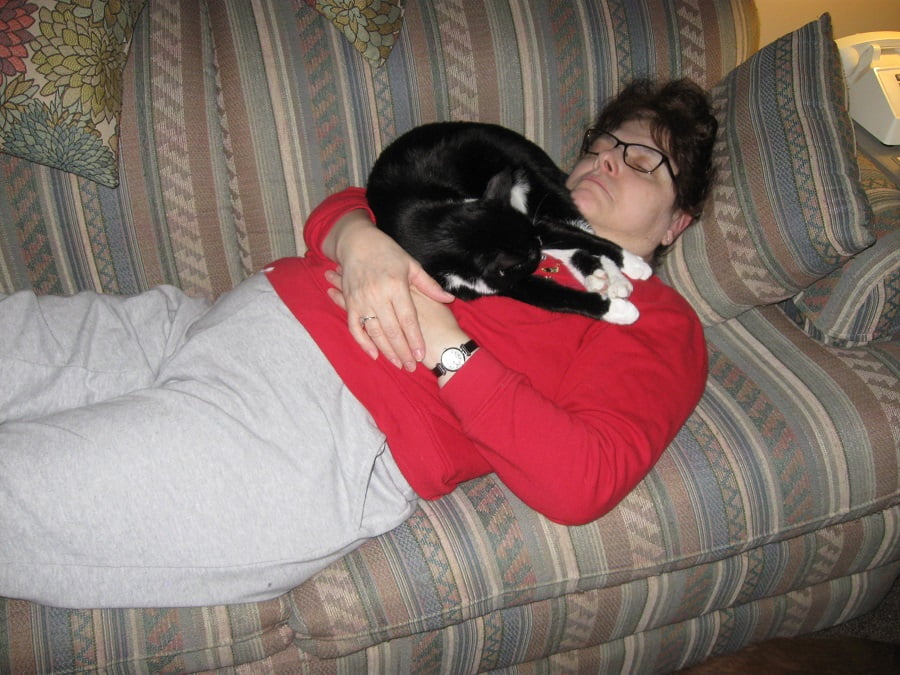
Why are Cats More Popular Than Dogs
There is no doubt that cats are the more preferred pets. In fact, the American Veterinary Medical Association revealed that more households in the United States have cats than dogs. This is not surprising as cats have some outstanding qualities that make them the absolute best. Below are eight of these qualities:
- Cats don’t take up as much space as dogs:
Regardless of the size of your dog, you would have to sacrifice a ton of space to ensure it lives a happy, healthy life. Dogs need a larger space to play and exercise, and their personal stuff will equally occupy a sizeable room in your abode.
Cats, on the other hand, do not require as much space as is needed with dogs. Aside from being generally smaller in size, their essentials such as litter boxes and water dishes won’t cost you too much space.
- Cats are less expensive to manage:
This is one of the primary reasons people choose cats over dogs. Cats are generally more affordable than dogs over the course of their lifetime. The adoption fees for cats or kittens are lower than for dogs or puppies, this is more so if it is kitten season or there is a major influx of kittens in shelters.
Due to their high activity, dogs tend to destroy their toys, hence dog toys are usually made from tougher and invariably more expensive materials. Cat toys, however, are cheaper to buy and can easily be fabricated at home.
While cats are content just lounging at home and playing with their toys, dogs require plenty of exercise for good health. On average dogs need two to three walks per day. This can be near impossible or stressful if you have a fulltime job.
- Cats are content living indoors:
While cats can spend the whole day indoors, this is almost impossible for dogs. In order for your dog to live a healthy, happy life, you must give it a lot of exercises and walks. This can be somewhat challenging for anyone with limited mobility or who don’t have access to a park or yard.
- Cats are quieter:
Regardless of how much of a dog lover you may be, you must admit the fact that incessant dog barking can be very annoying and disturbing. Dogs bark for many reasons, from seeing strangers to spotting another animal. Cats, on the other hand, are much quieter. Even at night when they tend to make their loudest noise, the meows and purrs are more cute than annoying.
- Cats are neater:
Cats are definitely neater than dogs, this is because of their self-cleaning actions. You won’t really have any reason to bathe your cat, unless if there is an emergency or some other medical reason. Dogs, on the other hand, can get that “doggy smell”. Bathing a dog can prove very challenging and dog groomers can be quite costly.
- Cats eat neatly:
Cats eat in the cutest and neatest of ways. They take small mouthfuls and tend to eat it over a long period of time. Cats will also stop eating when they are full. Dogs, however, gobble at their food. They eat as much as they can as fast as they can. They often have no limit on the quantity they will eat and can make themselves sick.
- Kittens become independent sooner:
Although kittens and puppies require a lot of time, attention, and energy, puppies tend to require more extensive and extended training than kittens, particularly as regards potty training. For kittens, by the time they are weaned from their mothers, they would have learned the basics of using the litter box. This means they can be left at home unsupervised while their owner is at work all day.
- Cats keep pests at bay:
One of the benefits of keeping cats in your home is that it ensures a pest-free home. Cats are natural born hunters and their scents alone can help to keep rodents away from your home.
In conclusion, I think we can agree that while both dogs and cats can make wonderful pets, cats are by far much easier to care for while bringing just as much joy.

Most Common Health Problems Cats Suffer from
FELINE URINARY TRACT DISEASES
This is a group of feline diseases with multiple causes. These can occur in unfit or overweight cats or cats who eat dry cat food. Stress and sudden changes can also raise a cat’s risk.
Symptoms include:
- Bloody urine,
- Urinating in odd places,
- Straining to urinate,
- Crying in pain when urinating and licking the urinary area due to the pain,
- Cat acting depressed,
- Dehydration,
- Loss of appetite,
- Vomiting.
URINARY TRACT PROBLEMS IN CATS
In female cats – Feline Lower Urinary Tract Disease (FLUTD) can have a number of different causes. This affects the structures that make up the lower portion of the urinary tract, which includes the bladder and urethra (the urethra is a tube that carries urine from the bladder to the outside of the body.)
Urinary tract disease can cause cats to urinate outside the litter box. Many cats end up in shelters because of this problem and end up being euthanized.
There are several potential causes of lower urinary tract disease:
- Bladder infection
- Obstruction of the urethra
- Bladder stones
- Interstitial cystitis (which is bladder inflammation) which is believed to be caused by stress.
Bladder obstructions almost always occur in males. If there is an obstruction the cat is unable to urinate. The cat will become toxic very quickly and the waste products will build up in the bloodstream. It’s crucial that you take your cat to the vet immediately if you suspect it’s not able to urinate.
Urinary tract disease symptoms are:
- Painful urination
- Loss of Appetite
- Urinating outside the litter box
- Straining to urinate (dysuria)
- Frequent attempts to urinate
- Bloody urination (hematuria)
If your cat has a urethral obstruction your vet needs to relieve the obstruction by passing a catheter through the urethra and into the bladder. Intravenous fluids may also be given as well as monitoring kidney function and blood electrolyte levels. For bladder infections, cats are given antibiotics and maybe given therapeutic diets.
You’ll need to encourage your cat to drink plenty of water. Canned food can be helpful because of their moisture content. Adding some water to it is also helpful.
Litter boxes need to be kept very clean and ideally kept in a private area where your cat won’t be disturbed. It’s also important to keep your cat’s stress level as low as possible. Keeping your cat’s favorite toys, scratching post, cat bed and available hiding places can contribute to keeping cat’s stress levels at a minimum.
In summation, encouraging water drinking, keeping your cat’s stress level low and his litter box clean can help in the prevention of urinary tract disease.

CAT AILMENTS — WHAT YOU MUST KNOW
DIABETES IN CATS
Diabetes mellitus is a condition in which the body cannot properly produce or respond to the hormone insulin. This results in elevated levels of the sugar glucose. Sugar glucose is the main source of energy for the body. The most common form of diabetes is the Type II form of the disease.
Which cats get diabetes?
Although diabetes can develop in a cat regardless of age, breed or gender, the most typical patient is older, overweight and neutered male cats.
What are the signs of diabetes?
Cats will become increasingly thirsty and hungry, and a small number of cats lose much of their appetite. There is often an increase in the amount and frequency or urine the cat produces. Other signs maybe lethargy and a dull and oily coat with dandruff. The cat may sleep more. Muscle loss over the cat’s hind legs and back is not uncommon. Some cats will suffer from diabetic neuropathy and walk flat-footed. This is caused by prolonged high blood glucose on the nerves.
Since most diabetic cats seem fine at first, their owner may not realize the cat is diabetic. Without treatment, the cat can fall seriously ill and develop a condition called ketoacidosis, which is a condition where levels of acid are abnormally increased in the blood due to “ketone bodies.” It mostly affects older cats and more females than males. It’s important to be aware of the signs of diabetes so the cat can be diagnosed and get early treatment.
How is diabetes treated?
Severely ill cats must be hospitalized for a few days to stabilize them and may need intravenous fluids to rehydrate them and to stabilize blood glucose levels. Once the cat is eating regularly then the vet can determine the cat’s insulin requirements. If however, a diabetic cat is stable they may not require hospitalization and can be treated at home. Usually, that means insulin injections twice a day using special insulin syringes. This may sound scary to some cat owners, but your veterinarian can show you how to administer the injection, and depending on the type of insulin, how often you’d need to inject your cat.
Speaking from personal experience, I can tell you that once you’ve given an injection or two, you should feel comfortable administering them.
TOXOPLASMOSIS IN CATS
Most cat owners I know are familiar with this term, but I thought it was important to inform you, my valued readers, about what toxoplasmosis is and how if may affect you or your cat.
Toxoplasmosis is caused by a microscopic parasite, Toxoplasma gondii. It can only be seen under a microscope, unlike many other parasites. Cats are the ideal host for this parasite to complete its life cycle.
There are 3 main ways the parasite is transmitted to people and animals:
- Ingestion of food or water contaminated with the parasite’s eggs
- Eating raw or undercooked meat that is infected
- Infection of a fetus during pregnancy
Only domestic and wild cats shed the infective form of the parasite in their feces. Unfortunately, they’re difficult to destroy, being resistant to disinfectants, drying and freezing.
Infected cats shed the eggs (oocysts) in their feces within a few days to a few weeks after being infected, but the oocysts are only shed for one to three weeks after the initial exposure. By the time the cats have signs of illness, most are no longer shedding oocysts. Kittens 6-14 weeks old shed the heaviest. While kittens infected before birth can suffer serious health issues, the majority of animals and people infected do not become ill. This disease can cause harm to a developing fetus. But if there is a concurrent illness, stress or a compromised immune system does play a role.
CANCER IN CATS
Some types of cancer are associated with FIV or Feline Immunodeficiency Virus. Infected cats have over a 600% increase in their risk of developing lymphoma. Some ways to reduce cancer risks are avoiding strong sunlight, which can contribute to squamous cell carcinoma. Early spaying will reduce the risk of mammary cancer and eliminates the risk of ovarian and uterine cancer.
Signs of cancer may include poor appetite, weight loss, lethargy, and depression. Your veterinarian will do a thorough physical exam and diagnostic testing to determine the cause of your cat ‘s illness.
Here’s a list of signs to watch out for. If you see any of these signs, you should take your cat to the vet as soon as possible.
Signs to watch for:
- Weight loss
- Abnormal swellings that persist or continue to grow
- Loss of appetite
- Sores that do not heal
- Difficulty eating or swallowing
- Persistent stiffness or lameness
- Difficulty breathing, urinating or defecating
On a personal note – having had a cat with cancer, I know how very difficult it can be to decide what the right course of action is. My feeling is if your vet believes that there’s a good chance for recovery without causing undue suffering, great! When my vet told me that if the chemotherapy needle got displaced it could result in having to amputate her limb, and her chances were not very good regardless, I decided that I did not want her to suffer.
I’ve been in vet’s offices where I’ve heard very sick animals screaming in pain. Their well-meaning owners just couldn’t let go, and I understand how they feel and am not being judgmental. However, I do believe the best thing we as pet owners can do is give our pets a happy life filled with love, and a merciful end when called for.
DIY CAT TOYS
Here are a few cat toys that are easy to make. I hope you like them!
Take a piece of cloth and cut it into 8-10 strips about 1” by 6” long. Tie the strips in the center with another strip of cloth so it resembles a spider. You can tie a strong string to the center and tie the other end to a stick about 12” long or just give the toy to your kitty to play with or use as a pillow.
Take cardboard tubes from paper towels or bathroom tissue. You will need 6 tubes about 4 inches long. Secure them 3 tubes across and 2 tubes down with tape. Make sure they are well secured. Cut a square of cardboard slightly larger than the assembled tubes and tape to the cardboard to seal up one end of the tubes. Put a few of your cat’s favorite treats in each tube and lay it on its side. You cat will love playing with the tubes to get their treats!!
CAT TREAT RECIPES
CATNIP BISCUITS WITH TUNA
1 cup oat flour (take regular oats and grind in a blender or food processor)
5 oz. can low salt tuna in water, drained
1 egg
1 tbsp. olive oil
2 tbsps. Dried catnip
Blend all ingredients in blender or food processor. Shape into ½ inch biscuits. Place on a cookie sheet lined with parchment paper. Bake at 350 degrees for 10-12 minutes. Store in a closed container in the refrigerator.
HOMEMADE GRAIN-FREE KITTY TREATS RECIPE
1 pound ground turkey, beef or chicken
3.75 oz. can no salt added sardines in water
2 egg yolks
1/3 cup nutritional yeast flakes (if not available at your grocer, they are at health food stores)
1 tbsp. catnip
Preheat oven to 350 degrees. Put sardines in a bowl and mash with a fork. Add remaining ingredients until well mixed and smooth. (Note—you can use a food processor for this step.) Using a pastry bag or a gallon-size ziplock bag with a small hole cut in the corner, filled with the mixture and squeeze out small “treat size” portions onto your cookie sheets. Bake for 20 minutes. The treats are done when cooked through and no juice is bubbling around the edges.
Store in an airtight container in the fridge. (Keeps for 2 weeks or you can freeze some for 3-5 months.)
SALMON CAT TREATS
Preheat oven to 350 degrees (if your oven tends to be hotter, you can lower the temperature to 325)
You’ll need:
2 cups whole wheat flour
2 cups high-quality salmon
1 large egg
Stir until well combined and the mixture becomes dough-like. Flour your work surface and mold dough into a ball. Roll out evenly with a rolling pin. Cut out shapes with a tiny cookie cutter (if not available, use a bottle cap and then cut the pieces in half if too large.) Place on the ungreased baking sheet (I always line mine with parchment paper.) Bake for 20 minutes until golden brown (ovens vary, so check in about 15 minutes.)
DIY KITTY CONDO
Take one box big enough for a cat to fit in. Close one end and cut the flaps off on the other end. Take an old T-shirt and pull it over the box with the neck centered over the open end. Use duct tape or safety pins to adhere the sleeves to the box. You can tie the sleeves together or use duct tape. Your kitty will love it!
CAT TREAT TOY
Take a 2-liter soda bottle and cut a small square on the center of the bottle, big enough for cat treats to come out. Repeat on the other side. Fill with your cat’s favorite treats. This will be very entertaining for your cat as it rolls around the bottle to get the treats to come out.
Here’s information on kitten vaccinations, schedule, risks and more
COMMON SIDE EFFECTS
- Discomfort where the kitty got poked
- Mild fever
- Low appetite and activity
- If the vaccine was given in the nose, your kitty may start sneezing four to seven days afterward
- Swelling under the skin where your kitty got the vaccine. It should go away after a few weeks but consult your vet.

THE KITTY CORNER
CATNIP
Okay, I’ll admit it. I love catnip. Well, maybe that’s a bit of an understatement, at least that’s what my mom says. I’m friggin’ addicted to the stuff! Not only does it smell good, but according to my brother Tanner, it also tastes good. Then again, Tanner loves most things edible. It just relaxes me – not that I need to relax since I sleep most of the day. Unfortunately, mom doesn’t give us cats catnip too often – she says it makes us too crazy. As far as I’m concerned, my housemate Tapas is the craziest cat when it comes to catnip – she rolls around in it until she’s practically covered in it!
HOW TO TRAIN YOUR HUMAN
Psst…I’m sneaking this article in and hope mom doesn’t see this. Why do you ask? Well heck, she thinks SHE trained ME! Oh sure, I eat when she calls me for breakfast and dinner, but that’s only because I want to eat. Now treats are another story. Mom’s a real mush you see and made the mistake of giving in to our pathetic meowing for treats, and now that we’ve got it down to a science, we get her to give us delicious treats throughout the day. So for any kitties lucky enough to read this, just follow these few simple steps:
- Look up at your mom (or dad) with big sad eyes
- Start meowing and whining (this usually does the trick) but if for some reason it doesn’t, the next steps are pretty much foolproof
- Start walking slowly towards where the treats are, do the old leg-revving routine, maintaining pathetic looking eye contact at all times. This has proven to work 99% of the time, according to official kitty studies (or my brother Tanner.)
- After you’ve eaten your treats be sure to show your gratitude with lots of kisses. Your mom (or dad) will be so touched by your affection they might even give you seconds. In any case, this should set them up for next time.

INTRODUCING A NEW KITTEN OR CAT TO YOUR OTHER CATS (HOW TO)
Hello, again cat lovers! Let me begin by making one thing perfectly clear – just because I live in a household with four other cats does NOT mean I approve of this! I mean the more cats in the household, the fewer treats I seem to get (mainly because my brother Tanner, affectionately also known as Godzilla, has no conscience when it comes to eating my treats, or Yogurt’s, Buddy’s, or Tapas for that matter. No wonder he’s 17 pounds! Okay, sorry if I went off the rails there for a minute. Let’s get down to business.
First of all, if you’re going to get another kitty, it’s great if you can get some behavioral history before adopting it. Remember, ADOPT, DON’T SHOP! See if their history says if the cat or kitten has been exposed to and gets along with other cats or dogs. Of course, cats need to get used to their new surroundings as well as other castor dogs in the house. But if you can find out more about your kitty, it will help you when it comes to helping him/her in getting acclimated to the new surroundings. This is where you humans come in.
Before you bring your new bundle of joy home, it’s important to set up a separate room with everything the new kitty needs – food, water, medication, litter box, a soft cat bed, and some cat toys should do It. This way your cat can get used to his/her surroundings in a comfortable environment where they feel safe. In my experience, most felines start to get curious about the world outside their safe room within a few days. At that point I will start putting their food right by the door and will do the same to the other cats, putting their food right outside the door to the room. That way they can get more used to each other in a safe way. You should also be visiting the new cat a few times a day. Let the cat come to you, don’t force it. With most cats or kittens I have had they seem to want to leave the room and explore in about a week. I will leave the door open a bit and supervise. It is not uncommon for the other felines to start hissing and be unhappy for a bit; but they should get used to each other, even become good friends, within a few weeks.
The best thing about adopting your cat is that the shelter or rescue group you adopt from will be there to help you with any questions you may have pertaining to that particular kitty. Plus, when you adopt, you save not only one life, but two, because you’ve made room for another kitty to be saved.
Wishing you a purrfect day!
Tamale

Recent Comments